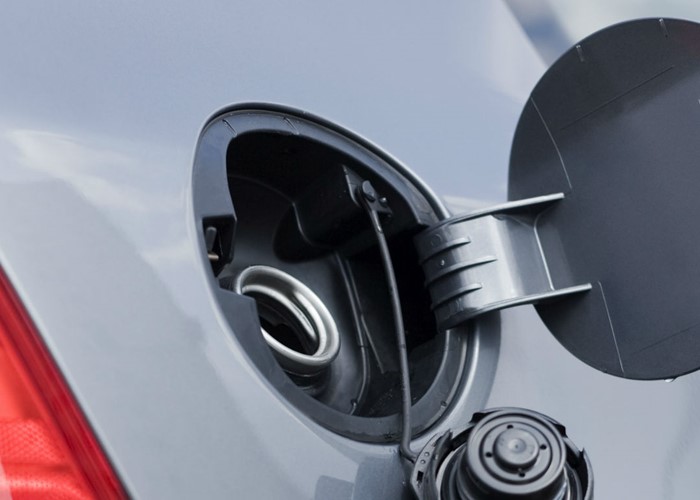The petrol price postcode lottery

Petrol prices have risen again, but only for some postcodes. Here is how you can beat the hikes.
Petrol prices in the same town can vary by as much as 3p per litre depending on where you fill up, a report from the AA has shown.
In Exeter, for example, supermarkets are charging up to 135.9p per litre, while non-supermarket retailers have cut prices to 132.9p.
Drivers living in small market and coastal towns are being hit hardest with some facing rises in petrol prices of up to 5p a litre since June.
Rising petrol prices
Petrol prices have risen on average by 3p to a peak of 137.61p per litre in the past two months, despite dropping slightly in the past week.
Diesel prices have also risen, from 140.24p in mid-July to 141.87 per litre today. But the AA says these national increases mask the ‘Jekyll and Hyde’ nature of UK fuel pricing.
The lack of a competitive pricing structure means many people are paying above the odds for petrol simply because of where they live.
Cheapest and most expensive petrol prices
London has the cheapest average petrol price at 136.9p a litre, followed by those in the South West and South East who pay an average of 137.8 and 137.7 pence per litre respectively.
The most expensive place to buy petrol is Northern Ireland, at 138.4 pence per litre. Scotland and Wales are the second priciest locations, at 138p per litre.
Prices vary by just under 4p depending on where you buy your petrol. Asda is the cheapest supplier, but as some areas have no access to the supermarket, drivers may be forced to pay more.
Average prices for petrol bought at Asda were 134.25 per litre, while at Texaco - the most expensive supplier - this shot up to 138.70 per litre in August.
When it comes to diesel there is a similar pattern and the difference between the two retailers is 4.08p.
The table below shows exactly how much you can expect to pay at different retailers.
Petrol prices by retailer
|
Retailer |
August price (pence per litre) |
July price (pence per litre) |
Price change (pence per litre) |
|
Asda |
134.25 |
131.57 |
+2.68 |
|
BP |
138.75 |
137.62 |
+1.13 |
|
Esso |
137.30 |
135.20 |
+2.10 |
|
Jet |
137.26 |
135.40 |
+1.86 |
|
Morrisons |
135.60 |
134.05 |
+1.55 |
|
Murco |
137.43 |
136.23 |
+1.20 |
|
Sainsbury |
135.23 |
132.76 |
+2.47 |
|
Shell |
138.04 |
136.03 |
+2.01 |
|
Tesco |
136.45 |
134.22 |
+2.23 |
|
Texaco |
138.70 |
136.96 |
+1.74 |
|
Total |
138.02 |
136.34 |
+1.68 |
|
UK average |
137.52 |
135.78 |
+1.74 |
Diesel prices by retailer
|
Reailer |
August price (pence per litre) |
July price (pence per litre) |
Price change (pence per litre) |
|
Asda |
138.43 |
135.79 |
+2.64 |
|
BP |
143.01 |
141.89 |
+1.12 |
|
Esso |
141.14 |
139.70 |
+1.44 |
|
Jet |
141.23 |
139.53 |
+1.70 |
|
Morrisons |
139.98 |
138.65 |
+1.33 |
|
Murco |
142.08 |
140.76 |
+1.32 |
|
Sainsbury |
139.48 |
137.09 |
+2.39 |
|
Shell |
142.30 |
140.59 |
+1.71 |
|
Tesco |
140.93 |
138.59 |
+2.34 |
|
Texaco |
142.51 |
141.14 |
+1.37 |
|
Total |
142.25 |
140.62 |
+1.63 |
|
UK average |
141.87 |
140.24 |
+1.63 |
Government grants
Drivers living in rural towns pay on average 4p-5p more than those living in cities. In July, the Government suggested the introduction of a 5p fuel duty rebate to readjust the inbalance. Read Remote areas in line for 5p cut in fuel prices.
This was introduced to island communities in March 2012, but could now be extended to other remote areas of the UK.
Rural communities could also be provided with grants to create their own oil supplies and this would allow them to control how much petrol would cost.
Unrest in Egypt, fluctuating US stocks and Chinese economic indicators have all been blamed for the rise, as they have pushed the wholesale oil price above the $110 a barrel marker for the first time since spring.
How to cut the cost of petrol
Petrol prices are rising, but by changing your driving habits you can avoid paying more. Prices vary wildly depending on where you live so before you leave home find out which retailer is cheapest on PetrolPrices.com.
Changing the way you drive will also help. The heavier your car, the more petrol it will burn so remove roof racks and any unnecessary items before you set off. Keeping your car in good condition also lowers the amount of petrol used so regularly check the tyre pressure, oil level and coolant.
Our guide How to beat the petrol price hikes has more information.
It’s also worth keeping an eye on the supermarkets as they are regularly caught up in price wars while competing to sell the cheapest petrol. Loyalty cards can be beneficial, if they apply at your local supermarket. These typically work by paying you points, or vouchers, depending on how much you’ve spent.
Motorway service stations are the most expensive place to fill up so if you can, always try to buy your petrol elsewhere. You can find out more in our article How to find cheaper diesel and petrol.
More on petrol and cars:
25 ways to cut your car insurance
Cosmetic car insurance: is it worth it?
Multi v single car insurance - what's cheapest?
Asda sparks new supermarket petrol price war with 2p cut
Comments
Be the first to comment
Do you want to comment on this article? You need to be signed in for this feature